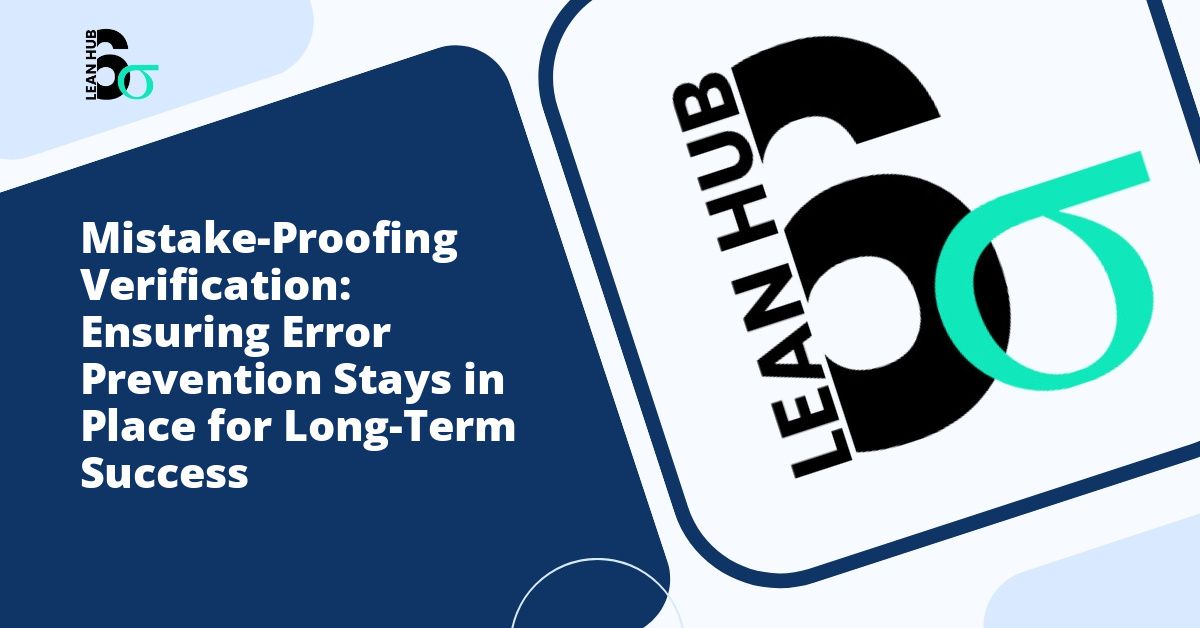In today’s fast-paced business environment, preventing errors before they occur is not just good practice; it is essential for maintaining quality, reducing costs, and ensuring customer satisfaction. Mistake-proofing, also known as poka-yoke in Japanese manufacturing terminology, represents a proactive approach to eliminating defects at their source. However, implementing mistake-proofing mechanisms is only half the battle. The real challenge lies in ensuring these error prevention systems remain effective over time through systematic verification processes.
Understanding Mistake-Proofing in Modern Operations
Mistake-proofing refers to any mechanism or process designed to prevent errors from occurring or to make errors immediately obvious when they do happen. These systems can range from simple visual cues and physical guides to sophisticated automated checks and sensors. The fundamental principle behind mistake-proofing is straightforward: design processes and systems that make it difficult or impossible to make mistakes in the first place. You might also enjoy reading about Control Limits vs. Specification Limits: Understanding the Critical Difference in Quality Management.
Within the framework of lean six sigma methodology, mistake-proofing plays a crucial role in achieving operational excellence. It aligns perfectly with the goal of reducing variation and eliminating defects, ultimately leading to improved process capability and customer satisfaction. Organizations that embrace lean six sigma principles understand that preventing errors is far more cost-effective than detecting and correcting them after they occur. You might also enjoy reading about How to Create a Control Plan: Step-by-Step Guide with Templates for Quality Management.
The Critical Importance of Verification
Installing mistake-proofing devices or procedures represents an important first step, but these solutions can deteriorate over time. Equipment may malfunction, processes may drift, and employees may develop workarounds that bypass safety mechanisms. This is where verification becomes absolutely critical. Verification ensures that error prevention systems continue to function as intended, maintaining their effectiveness throughout their operational lifecycle. You might also enjoy reading about How to Read and Interpret Control Charts Without Getting Confused: A Comprehensive Guide.
Without proper verification protocols, organizations risk a false sense of security. They may believe their mistake-proofing systems are protecting them from errors when, in reality, these safeguards have become ineffective or have been compromised. Regular verification activities help identify when mistake-proofing mechanisms need maintenance, adjustment, or replacement.
The Recognize Phase: Foundation for Effective Verification
The recognize phase serves as the foundation for establishing robust verification systems. During this critical stage, organizations must identify where mistake-proofing mechanisms exist within their processes and acknowledge the potential failure modes of these systems. Recognition involves more than simply cataloging existing error prevention measures; it requires a deep understanding of how these mechanisms work, what they protect against, and how they might fail.
In the recognize phase, teams should document the following information for each mistake-proofing device or procedure:
- The specific error or defect the mechanism is designed to prevent
- How the mechanism works to prevent the error
- The potential ways the mechanism itself could fail
- The consequences if the mechanism fails
- The current verification methods in place, if any
This comprehensive recognition process creates a clear inventory of all mistake-proofing elements within an organization, establishing the foundation for developing appropriate verification strategies. Without thoroughly completing the recognize phase, verification efforts may overlook critical error prevention systems, leaving gaps in quality assurance.
Types of Mistake-Proofing Verification Methods
Physical Inspection Verification
Physical inspection involves regularly examining mistake-proofing devices to ensure they remain in proper working condition. This method is particularly important for mechanical devices, fixtures, and guides that can wear down, break, or become misaligned over time. Inspectors should check for signs of damage, wear, or modification that could compromise the effectiveness of the error prevention mechanism.
Functional Testing Verification
Functional testing goes beyond visual inspection by actively testing whether mistake-proofing mechanisms perform as designed. This might involve intentionally introducing the error condition that the system is designed to prevent and confirming that the mechanism responds appropriately. For example, if a sensor is designed to stop a machine when a safety guard is opened, functional testing would involve opening the guard and verifying that the machine stops immediately.
Process Audit Verification
Process audits examine whether employees are following mistake-proofing procedures correctly and whether these procedures remain relevant and effective. Auditors observe actual work being performed, interview employees, and review documentation to ensure that procedural safeguards are being implemented as intended. This type of verification is essential for mistake-proofing methods that rely on human behavior rather than physical devices.
Data Analysis Verification
Data analysis verification uses process data and metrics to confirm that mistake-proofing systems are preventing errors effectively. By monitoring defect rates, near-miss incidents, and other quality indicators, organizations can identify potential problems with their error prevention systems before they result in significant quality issues. This approach aligns closely with lean six sigma principles, which emphasize data-driven decision making.
Establishing a Verification Schedule
Not all mistake-proofing mechanisms require the same frequency of verification. Organizations should develop a risk-based approach to scheduling verification activities, considering factors such as:
- The severity of consequences if the mistake-proofing mechanism fails
- The likelihood of the mechanism failing or becoming ineffective
- The frequency of use or exposure to wear and tear
- Regulatory or industry standards requirements
- Historical data on similar mechanisms
High-risk mistake-proofing systems, where failure could result in safety hazards or significant quality problems, should be verified more frequently than lower-risk systems. Some critical systems may require daily verification, while others might only need monthly or quarterly checks.
Documentation and Continuous Improvement
Effective verification requires thorough documentation. Organizations should maintain records of all verification activities, including who performed the verification, when it was completed, what was checked, and what results were observed. This documentation serves multiple purposes: it provides evidence of due diligence, helps identify trends or recurring problems, and supports continuous improvement efforts.
When verification activities reveal problems with mistake-proofing mechanisms, organizations should treat these findings as opportunities for improvement. The root causes of failures should be investigated, and corrective actions should be implemented to prevent recurrence. This continuous improvement cycle aligns perfectly with lean six sigma methodology, creating a self-reinforcing system that becomes more robust over time.
Training and Cultural Considerations
The success of any verification program depends heavily on the people who implement it. Employees responsible for verification activities need proper training on how to perform inspections, tests, and audits effectively. They must understand not only the mechanics of verification but also why it matters and what to do when problems are discovered.
Beyond training, organizations must cultivate a culture that values error prevention and sees verification as a critical responsibility rather than a burdensome requirement. When employees understand that verification protects quality, safety, and ultimately their own success, they are more likely to take these activities seriously and perform them conscientiously.
Technology-Enabled Verification
Modern technology offers numerous tools to enhance verification effectiveness and efficiency. Digital checklists, mobile inspection applications, and automated monitoring systems can streamline verification processes while improving documentation and compliance. Some advanced systems can even perform continuous automated verification, alerting personnel immediately when mistake-proofing mechanisms show signs of failure.
However, technology should complement rather than replace human judgment and oversight. While automated systems excel at consistent monitoring and data collection, human expertise remains essential for interpreting results, identifying subtle problems, and making decisions about corrective actions.
Conclusion
Mistake-proofing verification represents a critical but often overlooked aspect of quality management. While implementing error prevention mechanisms is important, ensuring these mechanisms remain effective over time is equally crucial. Through systematic verification processes grounded in the recognize phase of problem-solving and aligned with lean six sigma principles, organizations can maintain robust error prevention systems that deliver lasting value.
By combining different verification methods, establishing appropriate schedules, maintaining thorough documentation, investing in training, and leveraging appropriate technology, organizations can create verification systems that truly ensure their mistake-proofing mechanisms stay in place and continue protecting quality, safety, and customer satisfaction for years to come. The investment in verification pays dividends through reduced defects, lower costs, and enhanced reputation in an increasingly competitive marketplace.








